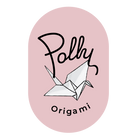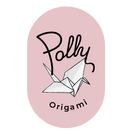What Are the Differences Between Kami and Washi Paper?
When it comes to the art of origami, the type of paper you use can make a significant difference in your folding experience and the final result. Two of the most popular types of paper used in origami are kami paper and washi paper. Both have unique characteristics that make them suitable for different types of projects. In this blog post, we'll explore the differences between kami and washi paper, helping you decide which one is best for your next origami creation.
Kami Paper
Kami paper, often referred to simply as "origami paper," is the most commonly used paper for origami. Here's what you need to know about kami paper:
- Origin and Composition: Kami paper originated in Japan and is typically made from wood pulp. It is mass-produced, making it widely available and affordable.
- Thickness and Texture: Kami paper is relatively thin and smooth, which makes it easy to fold and crease. It holds shapes well and is perfect for precise, detailed origami models.
- Colors and Patterns: This paper comes in a wide variety of colors and patterns, allowing for a lot of creativity in your designs. Whether you are making an origami crane or other intricate models, you'll find plenty of options with kami paper.
- Best For: Kami paper is ideal for beginners and for projects that require a lot of precision. It's great for making standard origami models and is especially well-suited for small to medium-sized creations.
Washi Paper
Washi paper, on the other hand, is a traditional Japanese paper known for its durability and unique texture. Here's a closer look at washi paper:
- Origin and Composition: Washi paper is traditionally made from the fibers of the mulberry tree, gampi tree, or mitsumata shrub. This traditional method gives it a distinct feel and higher quality compared to mass-produced papers.
- Thickness and Texture: Washi paper is usually thicker than kami paper and has a textured surface. The natural fibers give it a slightly rough feel, which can add an interesting dimension to your origami projects.
- Colors and Patterns: While washi paper can be found in various colors and patterns, it often features more subtle and sophisticated designs. The natural fibers can also add a beautiful, organic look to your origami.
- Best For: Washi paper is ideal for projects that require a sturdier paper. It's perfect for larger origami models, decorative items, and projects where the texture of the paper can enhance the overall aesthetic. It's also a favorite for making durable and beautiful origami cranes that can be used as gifts or decorations.
Comparing Kami and Washi Paper
- Ease of Use: Kami paper is easier to fold, making it a great choice for beginners. Washi paper, with its thicker and more textured nature, might be more challenging but offers a rewarding experience for more experienced folders.
- Durability: Washi paper is more durable due to its traditional composition and natural fibers. This makes it suitable for projects that need to last longer or withstand more handling.
- Aesthetics: Kami paper offers a wide variety of vibrant colors and patterns, ideal for fun and playful designs. Washi paper, with its elegant and subtle designs, is perfect for more refined and sophisticated projects.
- Cost: Kami paper is generally less expensive and more readily available, making it a practical choice for everyday folding. Washi paper, being handcrafted and higher quality, tends to be more expensive.
Choosing the Right Paper for Your Origami Project
When deciding between kami and washi paper, consider the following:
- Project Type: For simple, everyday origami projects, kami paper is a practical choice. For special projects or when you want a more refined look, washi paper is the way to go.
- Skill Level: Beginners will find kami paper easier to work with, while more experienced folders might appreciate the challenge and beauty of washi paper.
- Purpose: If your project is meant to be a durable keepsake or decoration, the sturdiness of washi paper will be beneficial. For practice and learning, kami paper is sufficient and cost-effective.
At Origamipolly, we offer a wide range of both kami and washi paper to suit all your origami needs. Whether you are just starting or are an experienced origami artist, our collection includes the best origami paper for every project. Visit our shop to explore our selection and find the perfect paper for your next origami creation.










